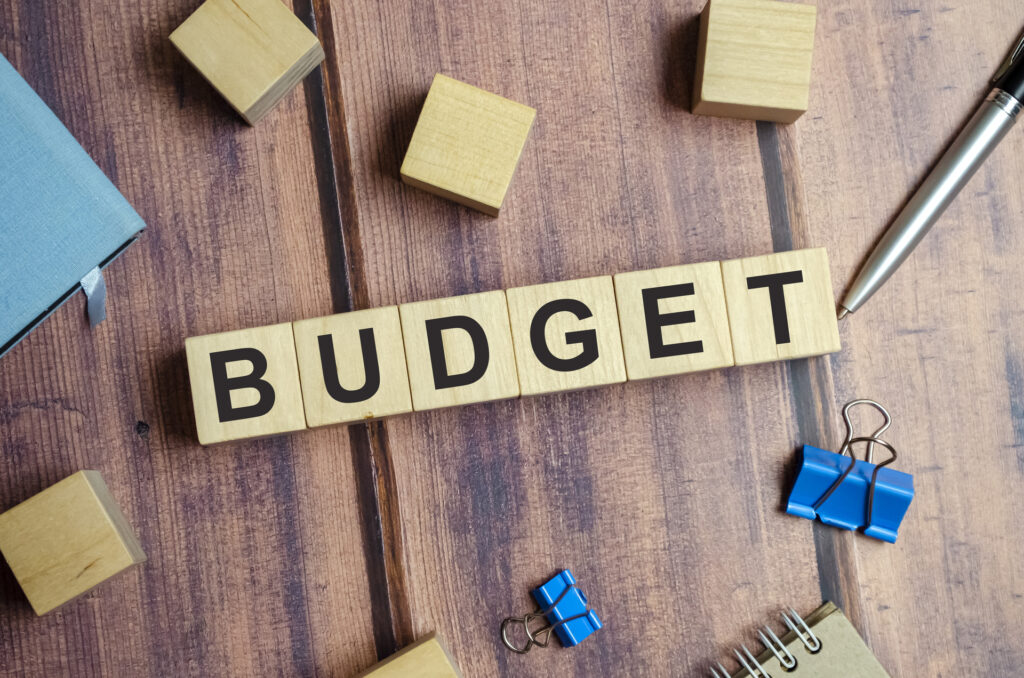Wedding Rental Budget Breakdown
The fastest way to breakdown a wedding rental budget is to sort your costs into groups, then give each group a clear slice of your total and adjust as you confirm headcount and layout. First comes infrastructure that makes the event possible, then the environment that sets the mood, then service and contingency that keep everything moving. Price the foundation by guest count and square footage, price the atmosphere by the size of your gathering and the hours after sunset, and protect a reserve for delivery, labor, and weather pivots so surprises do not become emergencies.
A rental plan begins with function. Guests need places to sit, places to dine, and a surface that lets servers and grandparents move with ease. Tables, chairs, linens, and a stable floor or firm ground are the backbone. Count tables from the seating chart rather than guesswork. Ten guests at a standard round is different from eight guests at a rectangle, and those choices ripple through linen sizes and centerpieces. Chairs look simple on a quote, yet their number drives the truck size, the crew size, and the time a team needs to place each row. The more precise you are here, the calmer every later choice becomes.
Once the base is defined, you can give shape to the room with lighting. Light is not decoration in name only. It decides whether faces look warm in photos and whether the last toasts feel intimate or washed out. If your timeline reaches into evening, plan for two moods. Gentle light as guests find their seats and a brighter, more focused plan when dancing begins. Ask for output that matches your space rather than a generic string count. A few well placed sources can do more than a tangle of fixtures if they are aimed thoughtfully. The budget line for lighting should feel meaningful, because when the sun fades, light becomes the room.
Tabletop choices are where personality meets practicality. Classic white plates and simple glassware keep costs steady and work with nearly any palette. Colored glass, patterned chargers, or specialty flatware raise impact and also raise the total. There is no right answer. Let your priorities decide. If flowers will carry the visual story, keep the tabletop refined and let the arrangements breathe. If you want the tables themselves to sing, build the rental plan around textures and tones that echo your invitation suite. In either case, decide early so quantities can be reserved before the busy weeks claim them.
For open space celebrations, shelter is often the largest single rental. The style and size of a tent, the decision to add side walls or clear panels, and the choice to bring in flooring all shape the number at the bottom of the invoice. Think of the tent as the venue itself rather than a single line item. It holds your guests, your lighting, your sound, and your dinner. If the ground is uneven or the site holds moisture after rain, flooring protects shoes and changes the way the night feels underfoot. These decisions deserve room in the budget because they change comfort as much as they change the look of the space.
Power and sound support rarely make it into early mood boards, yet they are as important as the tables themselves. Caterers need reliable circuits for warming equipment. Musicians and DJs need clean power separated from kitchen draw. Lighting that flickers on a shared line helps no one. Ask rental partners to specify distribution, cords, covers, and quiet generators when needed. These pieces are not glamorous, but they protect your investment in everything that uses electricity, and they belong in the plan rather than added the week before the wedding.
Restrooms are another quiet essential when the site does not include them. The range runs from immaculate trailers with separate rooms to simple units placed discreetly with thoughtful lighting and pathways. Factor delivery distance, service during the event, and placement that keeps queues away from photos. Guests remember comfort. They do not need to see the line item to appreciate that someone thought about it.
Climate support depends on time of year but should not be left to hope. Fans move air on still afternoons. Heaters take the edge off a cool evening. Both require fuel or power and both need safe placement. Ask how many units are recommended for your guest count and tent size, then decide where comfort ranks for your family. A small spend here often pays back across the entire evening through happier guests and a fuller dance floor.
Linens deserve a second look because they do more work than people expect. The same menu reads differently on crisp, weighty cloth than on a thin covering. Floor length hides mixed chair styles and utility legs. Runners add texture when centerpieces are low and simple. Confirm sizes by table style to avoid short corners or puddles that trip servers. Swatch in daylight if you can, and remember that candlelight shifts color more than natural light. A small upgrade here can lift the room without touching other categories.
Delivery, setup, strike, and pickup are part of the rental budget even when they appear in separate sections of a quote. Crews deserve to be scheduled like vendors, with realistic windows and enough hands to place everything safely. Ask for arrival times that respect the flow of your day and for a strike plan that works with any late night transport rules. Some sites limit trucks after a certain hour. Others require quiet breakdown. These conditions can change labor totals and should be confirmed when you approve the estimate.
Damage waivers and protection plans are easy to skip and easy to regret. A windy evening, a spilled drink, or a guest who sets a bag on a delicate fixture can nudge totals upward after the fact. Read how coverage works and what it does not include. Small fees now can prevent a long conversation later, and they belong in the true budget even if they feel optional on paper.
Hold a contingency. Five to ten percent is common, with more if your plan relies on a complex build. Contingency is where last minute table additions, extra cocktail tables for an unexpected lounge, a second set of heaters, or a longer strand of market lights find a home. Without this cushion, the final week becomes a math puzzle. With it, you can say yes to sensible changes without cutting a favorite detail to pay for them.
Work the math forward from your guest list, not backward from a dream photo. A guest list of eighty means a certain number of dining seats, a certain length of bars, a certain count of plates and napkins and water glasses. Add a little breathing room for breakage or last minute arrivals. If you will reuse glassware between courses, build time into the service plan. If you prefer fresh pieces for each course, your counts go up. These choices affect labor and rentals together. They are not just style notes.
Revisit the quote after your second round of RSVPs. Numbers will shift when families merge tables or when a few friends must decline. This is the moment to return unneeded pieces and add what makes the room sing. It may be more columns of light near the band. It may be a few tall vases so the head table feels anchored. Small changes made here are gentle on the budget because they respond to confirmed counts rather than guesses.
Compare partners by completeness, not by the first number you see. One company might include setup and strike, lighting design, cord covers, and on site support. Another might price the items only and add labor later. Ask for apples to apples. Ask for how long a crew will be on site and who to call if weather moves in early. You are not only buying objects. You are buying the team that places them and the confidence that comes from a clear plan.
If your celebration includes a ceremony away from the reception site, treat that smaller scene with the same respect. A few rows of chairs, a focal point, a way to shade elders or provide water, and sound that lets vows carry without strain all come from the rental world. They do not cost as much as the main build, yet they shape the first memories of the day and deserve a defined place in the budget.
Remember that rentals touch photography in a direct way. Light on faces, clean lines on tables, and clear aisles for movement all change how images feel. Photographers work best when they can move smoothly and when the room reads as intentional rather than improvised. A thoughtful rental plan is a gift to your album as much as it is a gift to your guests.
As you finalize, read the schedule like a story. Trucks arrive before florals so large pieces are in place. Lighting follows structure. Tabletop arrives clean and wrapped, then is opened with lint rollers and soft cloths. Sound checks happen while the room is still quiet. Strike after the last song happens in reverse. This sequence belongs in emails long before the week of the wedding. When everyone shares the same picture, the budget you built turns into a room that works.
In the end, a wedding rental budget breakdown is less a fixed spreadsheet and more a conversation between scale, comfort, and style. Anchor the plan in the pieces that let people dine and celebrate without effort. Layer in the light and finishes that make the space feel like yours. Protect time and money for delivery and labor so crews can do careful work. Keep a small reserve for the unknown. If you treat the rentals as the bones of the evening and not as afterthoughts, the rest of your design sits on something solid. Guests may never point to the chair count or the lumens per bulb, but they will feel the result in the ease of the night and in the way the room seems to welcome them the moment they step inside.


